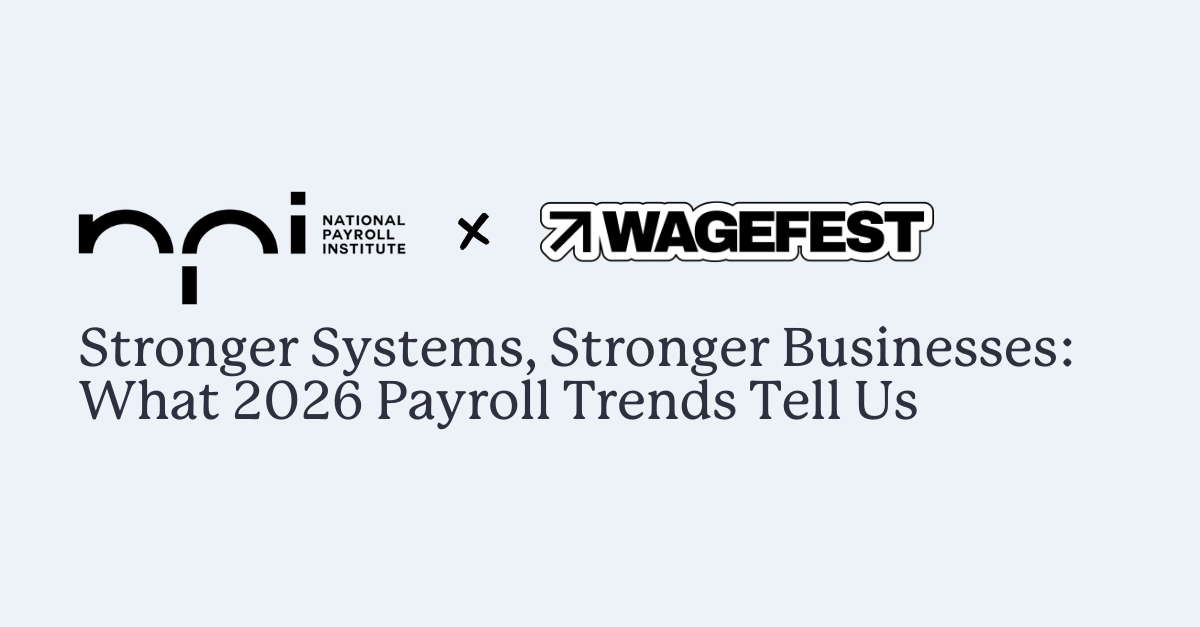Become an insider!
Get our latest payroll and small business articles sent straight to your inbox.
For many small businesses, payroll year-end is the ultimate test of endurance — a high-stakes challenge where mounting deadlines, complex regulations, and the risk of costly penalties converge. It’s no wonder so many business owners dread this time of year. The stress can feel overwhelming, like battling a relentless force of Kryptonite.
But this is where you, as a bookkeeping or accounting professional, have the chance to shine. Your expertise can turn payroll from a headache into a moment of relief for your clients. With the right strategic planning, you can not only help them navigate year-end with ease but also position yourself as their go-to ally long term.
So, how do you become a payroll hero? The path to heroism doesn’t require actual superpowers. By embracing these four key year-end strategies, you can ensure smooth processes for your clients while building stronger, long-lasting relationships.
Step 1: Audit and organize payroll data early
When it comes to payroll year-end, preparation is everything. Mistakes can turn a routine process into a time-consuming ordeal. The key to a seamless year-end is to audit and organize your clients’ payroll data well in advance. By doing so, you’ll not only avoid unnecessary headaches but also identify potential issues before they escalate into costly errors.
Superpower tip: Wagepoint automatically calculates pensionable and insurable earnings, letting you flag discrepancies before generating year-end forms and tax filings. No manual work required.
The early bird spots the error
Start by reconciling payroll — ensuring your client’s payroll records align with the accounting software. Regular audits (monthly or quarterly) can save you from last minute scrambles. Clients will appreciate your due diligence; especially considering that over 40% of working Canadians pay more attention to their social media channels than their pay stubs.
Superpower tip: Check your bank reconciliation for any outstanding payroll payments as these can lead to incorrect numbers and require time-consuming adjustments later.
A true lifesaver: Automated payroll reports
Post-payroll reports are essential for spotting errors in real time. Having data at your fingertips such as workers’ compensation, earnings, deductions, benefits, and payroll taxes is like having x-ray vision – you’ll catch mistakes before they impact your clients.
Superpower tip: Run a year-over-year payroll expense comparison report to help identify payroll KPIs and potential cost leakages. Integrating Wagepoint with a leading accounting software, like QuickBooks or Xero, makes this a seamless process.
Avoid a Pensionable and Insurable Earnings Review (PIER)
The dreaded PIER is less scary once understood. Think of it like the Canada Revenue Agency (CRA) double-checking your work. It’s there to understand why there could be differences between the Canadian Pension Plan (CPP) contributions or Employment Insurance (EI) premiums expected by the CRA compared to what was submitted from the year-end T4 statements. If there’s a difference, that’s when a PIER report is sent.
Superpower tip: Stay ahead by understanding the pensionable and insurable impacts of taxable benefits. Check out our guide, How to Avoid a PIER: A Small Business Guide, for more details.
Step 2: Leverage technology to streamline processes
Automation is a game-changer. Just as every superhero has their utility belt, payroll professionals have powerful tools to make their work efficient, secure, and accurate.
Let payroll software, like Wagepoint, handle the heavy lifting, from generating T4s, T4As, and RL-1s to syncing payroll and accounting data seamlessly.
When your payroll software integrates with your favourite business tools, you are unstoppable. Wagepoint integrates with accounting software like QuickBooks and Xero to eliminate manual entry, saving time and reducing errors.
Superpower tip: Upgrade your tools annually to ensure they evolve alongside your business needs. Remember Iron Man’s first suit? Exactly.
Step 3: Educate and empower your clients
Your clients rely on you more than ever during payroll year-end. By educating them on processes, deadlines, and responsibilities, you position yourself as an invaluable partner while setting clear expectations.
Building better habits
- Encourage timely submissions: Gentle reminders about payroll data deadlines can prevent bottlenecks.
- Communicate deadlines and their importance: Share a payroll calendar to keep clients informed and enhance your value. (Tip: Use our 2025 Canadian Small Business Payroll Calendar)
- Provide checklists: Tailor checklists to guide clients through their responsibilities, ensuring smooth year-end processing. A good place to start is with The Small Business Year-End Checklist (Canada).
Why client education is good for business
Small business owners who understand the role they play in your payroll process are more inclined to be proactive, making sure all of their ducks are in a row. This level of collaboration not only helps reduce compliance issues, it creates a stronger relationship between you and your clients — that means repeat business, opportunities for upselling, and lead generation through referrals. Clients don’t know what they don’t know. Highlighting knowledge gaps is an important part of the process too.
Step 4: Offer additional value during tax season
Year-end is the perfect time to go above and beyond. By adding value beyond payroll processing, you become more than a service provider or payroll tax preparer — you become a trusted advisor. Here are some steps you can take this tax season that go beyond tax returns.
Proactive communication
- Payroll reports: Share insights on labour costs to help clients make informed management and business decisions.
- Legislative updates: Keep clients informed about changes in compliance, minimum wages, or termination rules.
Upsell opportunities that add value
- Year-end payroll reviews: Offer detailed assessments to ensure accuracy and compliance.
- Payroll expense budgeting: Help clients forecast cash flow for the upcoming year, showcasing your expertise and foresight.
Superpower tip: Explore our The Bookkeeper’s Playbook to Making Payroll Profitable to learn how to position payroll services and grow your practice.
Suit Up for Success
Payroll year-end doesn’t have to be the most stressful time of year for you or your clients. By auditing early, leveraging technology, educating clients, and adding value, you can transform year-end payroll into an opportunity to strengthen relationships and grow your business.
Start by choosing the right payroll solution. The best software is intuitive, compliant, and backed by reliable support — ensuring year-end tasks like tax filings and remittances are a breeze.
Every payroll hero needs a sidekick.
Start your 14-day trial today.











